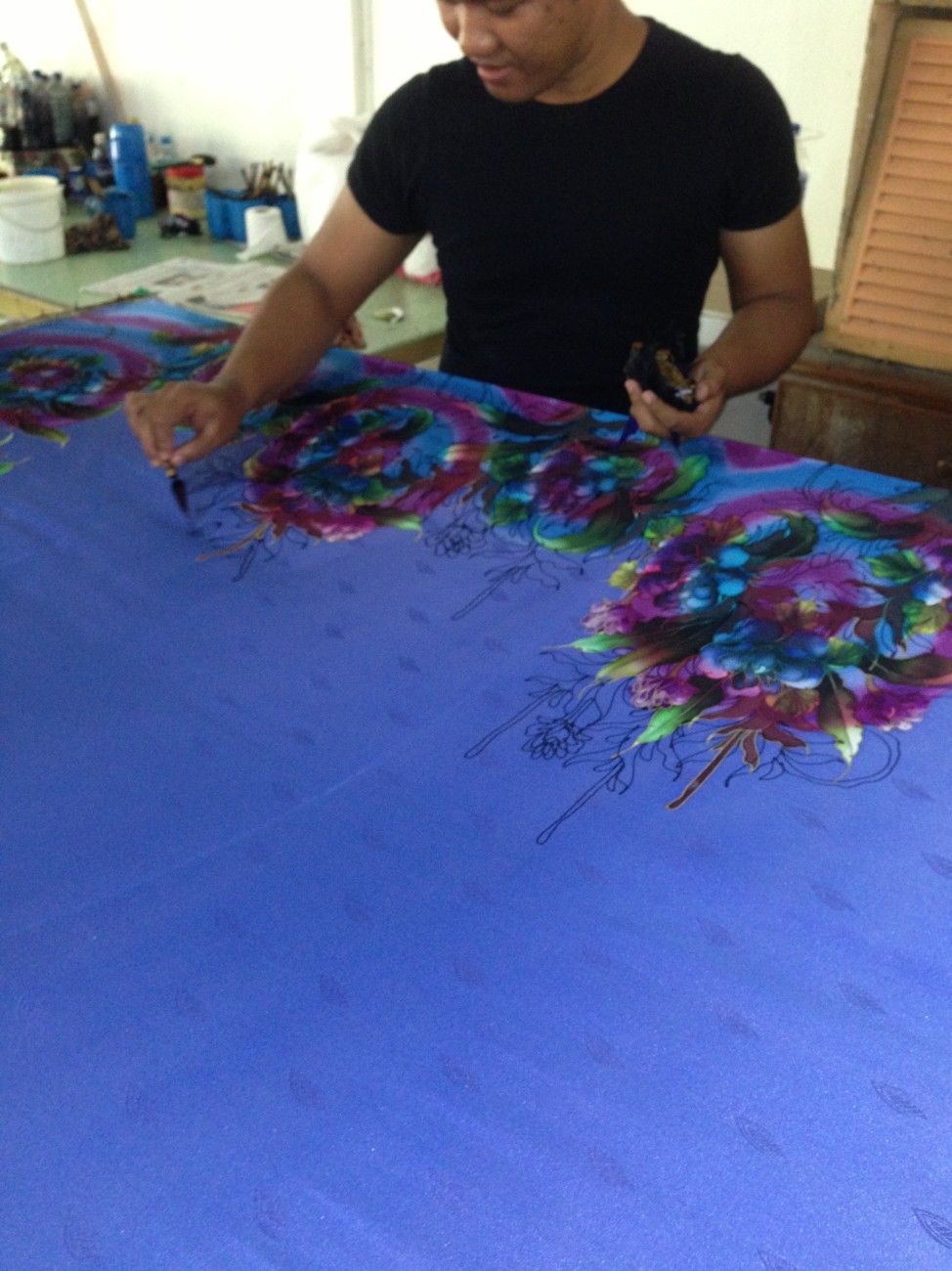
by Loti | May 2, 2013 | Art, Malaysia, UNESCO
Malaysia. Remember tie dying T-shirts using rubber bands and wild, bold colors? Well this gentleman in the photo is practicing the centuries old art of batik. Cloth is hand coated with removable wax and then dyed much like tie dying, with beautiful, intricate patterns and colors. Batik has worldwide popularity (Obama’s late mother was an avid collector) and is designated a Masterpiece of Intangible Humanity by UNESCO, the World Heritage folks (a masterpiece of what??? Basically non material art forms including dance, language and sports). Since I have never heard of this designation, I wondered what else were called Masterpieces. An interesting cross section of activities, it turns out represent our traditions and habits. Carpet weaving in Azerbaijan, the Royal Ballet in Cambodia, the Bejing Opera, Tightrope Walking in South Korea, Falconry in Belgium and of course, as we now know, Batik in Southeast Asia. All designated Masterpieces. Very interesting. But back to batik. As an important part of various cultures, Indonesian officials ask government employees wear batik on Fridays; Singapore and Malaysian Airlines have batik as part of the flight attendants uniform and Nelson Mandela wears batik on formal occasions. So I am researching taking a batik class and looking at samples of batik on line. It just adds to my whole new world. What fun!...
by Loti | Mar 25, 2013 | Art, Thailand
Thailand. With over 40,000 Buddhist temples in Thailand, Wat Po is one of the largest temples in Bangkok. Home to the reclining Buddha we have seen, it also has numerous curious statues guarding the inner courtyards. Here we see a Farang (meaning foreigner in Thai) guard who is dressed in Western style wearing a top hat. Very strange. What is even stranger to me, these statues were used as ballast on trade ships returning from China. So what exactly is ballast? While it is used by ships to lower their center of gravity, by providing weight, it is also used by Formula One racing cars, hot air balloons, offshore drilling platforms, snow plows and floating wind turbines. Wow. I never really thought about ballast. Race cars use ballast to help the car meet minimum weight requirements, ships use it to improve stability and maneuverability and of course the Wizard of Oz(my all time favorite movie)used it to launch his hot air balloon that poor Dorothy missed as she ran after Toto. Good thing she had her red shoes to get her home!...
by Loti | Mar 18, 2013 | Art, Buddhism, Religions, Thailand
Thailand. The soles of the Reclining Buddha at the Wat Pho temple in Bangkok are inlaid with Mother of Pearl. Of the 108 scenes, each represents a depiction of enlightenment. Flowers, baskets, flags, animals. As you can see from the photo, all very intricate and shiny. So what exactly is Mother of Pearl? Well, I had no idea other than it is iridescent. So I learned it is also called nacre (good Scrabble word) and is made in much the same way as a pearl. Produced by a mollusk, such as an oyster or abalone, it is a blend of minerals secreted by the mollusk inside their shells to protect them from foreign objects and parasites. A pearl is made by the same substance deposited around an object (inserted naturally or by humans) lodged in the mollusk’s shell. Mother of Pearl is used in jewelry, furniture making, buttons and musical instruments. Items made using nacre are considered to be organic since they originate from living creatures or plants. While it is very resilient and tough, it scratches easily. Another amazing work of nature used by us humans to enrich our lives!...
by Loti | Mar 11, 2013 | Animals, Art, Thailand
Thailand. What are all these intricate patterns on the beach, I wonder? Where did they come from. Aliens? Reminds me of the mysterious corn maze circles. But on closer observation, there are tiny little sand colored crabs scurrying around. Every time I get near they descend into their burrows. It turns out, the sand balls shown in the photo, are made by sand bubbler crabs native to the Indian and Pacific Oceans. The crabs take sand into their mouths, sift thru it looking for organic materials washed in by the tide, and then spit the sand out into a ball. They can make 360 balls an hour (I am not sure who sat and counted) forming the most amazing patterns radiating from their burrow holes. At high tide, the balls are washed away and the crab starts all over at low tide. The longer the tide is out, the more detailed the pattern. Quite the little artists in nature....


